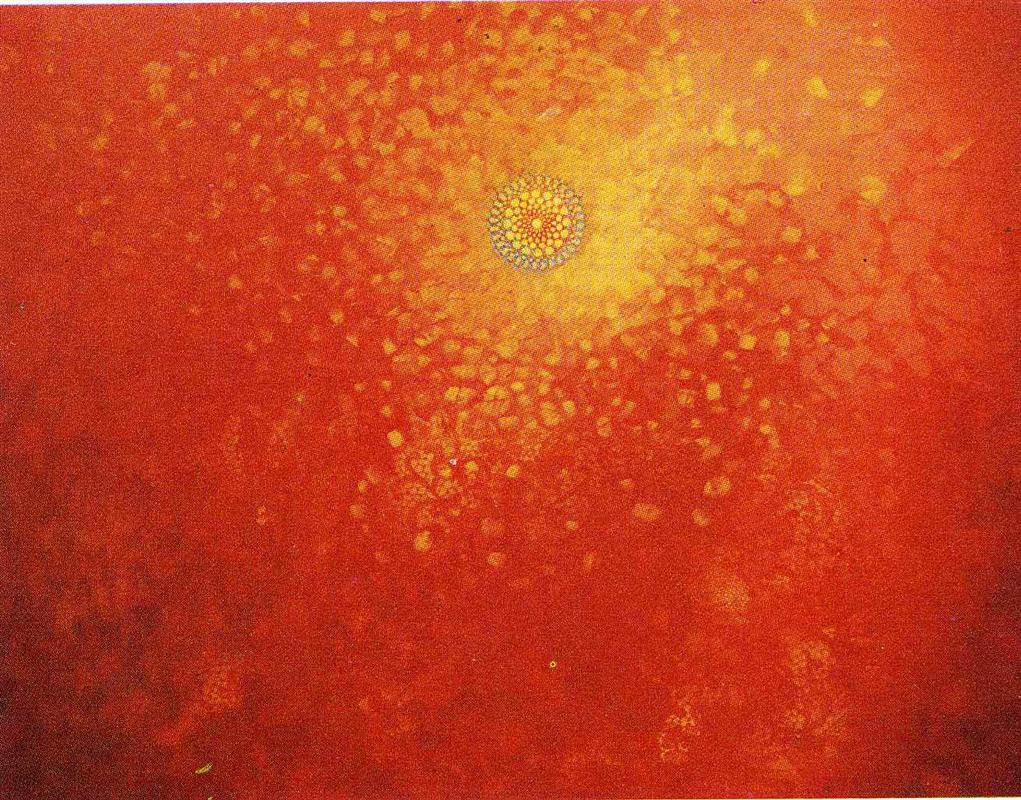Max Ernst, The Cardinals Are Dying, 1962
35 x 45.75 in.
Max Ernst (1891-1976) was a major German painter, graphic artist, and sculptor, as well as a poet. As a pioneer of both Dada and Surrealism, Ernst was a key figure in the development of modern art. Born in Cologne, Ernst's father was an amateur painter and a strict disciplinarian, inspiring his toward both painting and an anti-authority attitude. Ernst attended the University of Bonn, studying philosophy, literature, psychology, and art history. Among his important early influences was the art of mental patients that he saw when he visited asylums. His earliest work shows the strong influence of Post-Impressionism, but already demonstrates the singular talent and vision that Ernst developed throughout his career. In 1911 he met August Macke and decided to become an artist, joining Macke's group of German Expressionists. He exhibited with the group several times in 1912 and 1913. World War I interrupted Ernst's career and the group's activities. Several members of the group would die in battle, including Macke and Franz Marc. For Ernst's part, he viewed his own service as a kind of death, writing that, "On the first of August 1914 M.E. died. He was resurrected on the eleventh of November 1918." Ernst returned to art after the war, and began making collages. In 1919, he and several others founded the Cologne Dada Group. A 1920 photographic/collage self-portrait illustrates his aesthetic at the time. Ernst's Dada soon developed into Surrealism, creating complex landscapes and portraits. He also explored Cubism. Among his most famous pieces is 1937's L'Ange du Foyer. As World War II broke out, Ernst was arrested twice in Paris–once as an "undesirable foreigner" but was released, and once by the Gestapo whom he escaped. He fled to New York where he remained throughout the forties. Perhaps we can see the influence of New York on his paintings of the period, which often merge multiple styles. He returned to Paris in the early fifties and remained there for the rest of his life. His later works include many diverse pieces, such as dreamlike landscapes and powerful explorations of shape and color. The Cardinals Are Dying belongs firmly to the latter category, which burns so bright that it looks like the sun itself could be exploding. The small sun-like design is the only figurative element within the burst of color. Using such a small range of colors, Ernst communicates a great deal of intensity and emotion, creating a painting that is simultaneously ecstatic and tragic.

No comments:
Post a Comment